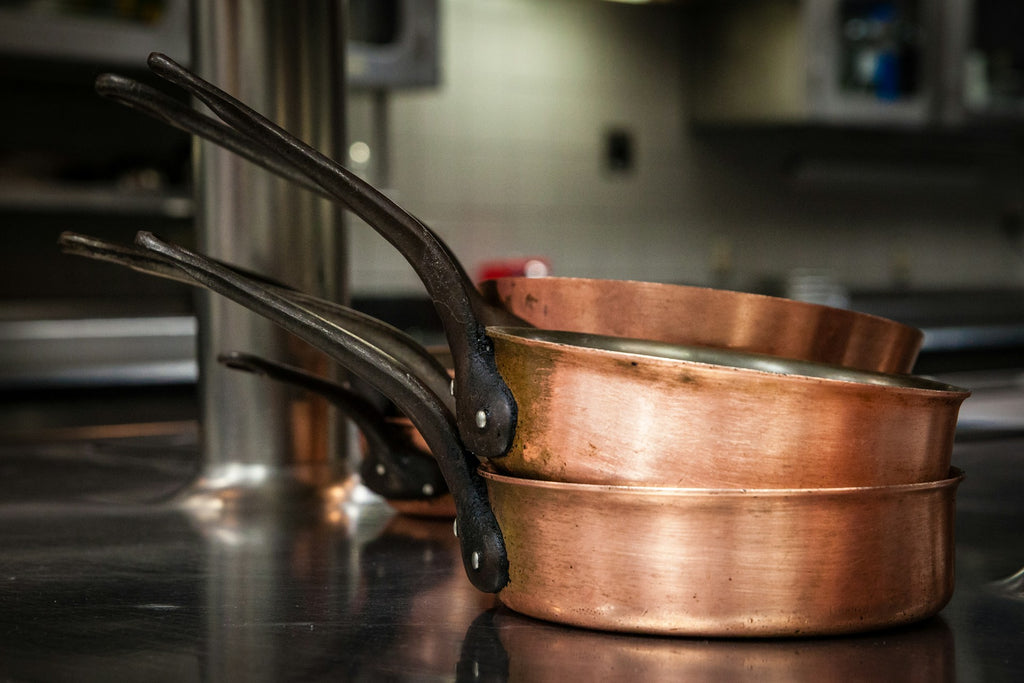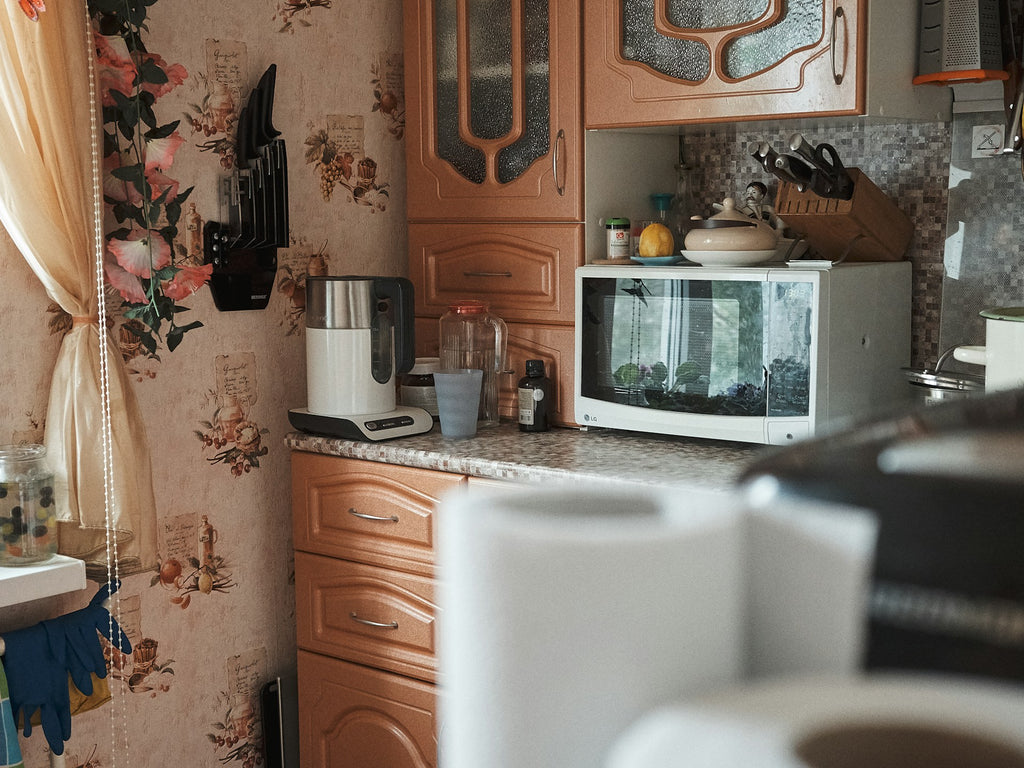Kitchens are where you keep your secret ingredients. But while everyone loves to discover new unexpected flavors thanks to those surreptitious sugars and spices, do you know what chemicals are lurking in the cupboards and drawers where you store your cleaning supplies? Remember, the kitchen is rightly called the heart of the home — a space to gather, work, chat, do homework and share stories. Shouldn’t you keep it — and especially the appliances that come into contact with your food — free from harsh toxins that can harm your health?
The good news is, keeping your kitchen clean and sparkling doesn’t have to mean relying on chemicals and disposable cleaning products. Instead, with a few simple eco-friendly cleaning tips and tricks, you can maintain your kitchen appliances safely. Read on for a rundown of sustainable hacks to make your green kitchen gleam.

Gas and electric stoves
To clean gas and electric stoves without resorting to chemical cleaners and grease fighters, start by removing the burner grates and soaking them in a mixture of hot water and vinegar. Let these soak for 30 minutes. For a deep clean, leave them for up to four hours.
As for an eco-friendly cleaning tip for stubborn stains on stove surfaces, try combining baking soda with either white vinegar or gentle soap and scrub with a damp cloth or sponge. Finish by wiping down the stove with a vinegar-water solution for a streak-free shine.
Hand towels
Instead of single-use paper towels in the kitchen, stick to classic hand towels or upgrade to reusable paper towels made from biodegradable materials. Of course, that means you’ll need to throw these hand towels and reusable paper towels into the wash after a few uses. To make the process a green cleaning one, use SaltyLama laundry detergent sheets. These coconut-based sheets are free of parabens and synthetics that can be harmful to your health, ensuring a gentle and hypoallergenic wash.
For a regular-sized load of kitchen towels, simply tear a strip — two strips to a sheet — and put it where your old detergent used to go. For larger loads, use one entire sheet. For an extra fresh kick, you can also add a splash of white vinegar. If you want to make your laundry routine even easier, skip the store and lines by subscribing. You’ll save money and never run out of detergent again. You can cancel, pause, or skip an order on your subscription whenever you like.

Pots and pans
For non-stick pots and pans with stains or scorched-on food residue, mix baking soda and water into a paste. Cover the stubborn spots with the paste and let rest for a few hours or overnight. The next day, scrub with a natural bristle brush or sponge to lift away the grime. For stainless steel pans, follow the same steps but then finish it off with a paste consisting of baking soda and vinegar to help restore the shine.
If you use a cast-iron skillet, make a sandy paste of baking soda and water and scrub with a soft-bristle brush or scouring pad. Rinse and repeat as needed. You don’t want to soak cast-iron in water as this can create rust.
Air fryer
To clean an air fryer, unplug it and make sure it has cooled off completely. Remove the basket and tray and wash them with warm, soapy water. For stubborn residue, soak them in a vinegar-water solution before scrubbing. Lift your air fryer and gently knock out any crumbs that may be on the bottom of the machine. Use a damp cloth to wipe down the interior and exterior, avoiding chemicals that can damage its nonstick coating.
Toaster
To remove crumbs and debris from a toaster, unplug it and empty the crumb tray into the trash or compost bin. Wipe down the exterior with a damp cloth or sponge, taking care not to get any water inside the appliance. If you have a stainless steel toaster, you can use a paste of vinegar and baking soda to restore its shine.
Fridge
Keep your fridge clean and odor-free by regularly removing expired food items and wiping down shelves and drawers with a mixture of vinegar and water. For stains inside the fridge, sprinkle baking soda on a damp cloth and scrub gently.
For a consistently clean fridge, create a monthly routine where you pull out the drawers and shelves and clean them to remove crumbs, spill marks, and other residues. Plan this just before grocery day for a smooth cleaning experience.

Microwave
To clean a microwave without harsh chemicals, fill a microwave-safe bowl with water and add a few slices of lemon or a tablespoon of vinegar. Heat the mixture on high for several minutes until the steam loosens any dried-on food splatters. Wipe down the interior with a damp cloth or sponge, which should remove any remaining residue.

Mixers and blenders
After each use, rinse blenders and hand mixers with warm, soapy water to remove any food residue. For deeper cleaning, disassemble the blender or mixer and soak the components. Use a brush or sponge to scrub away any stubborn stains before rinsing thoroughly and drying.
Ensuring your kitchen appliances remain clean and sparkling doesn’t mean you have to risk the environment or your own health. By embracing eco-friendly cleaning methods and products, you can maintain your appliances while also reducing your impact on the planet. From using natural ingredients like vinegar and baking soda to reusable hand towels, there are plenty of eco-friendly ways to maintain a gleaming green kitchen. Remember, every step you take contributes to a more sustainable future. So, the next time you tackle chores, especially maintaining your appliances, prioritize eco-friendly alternatives — your clean conscience will shine as brightly as your appliances.

